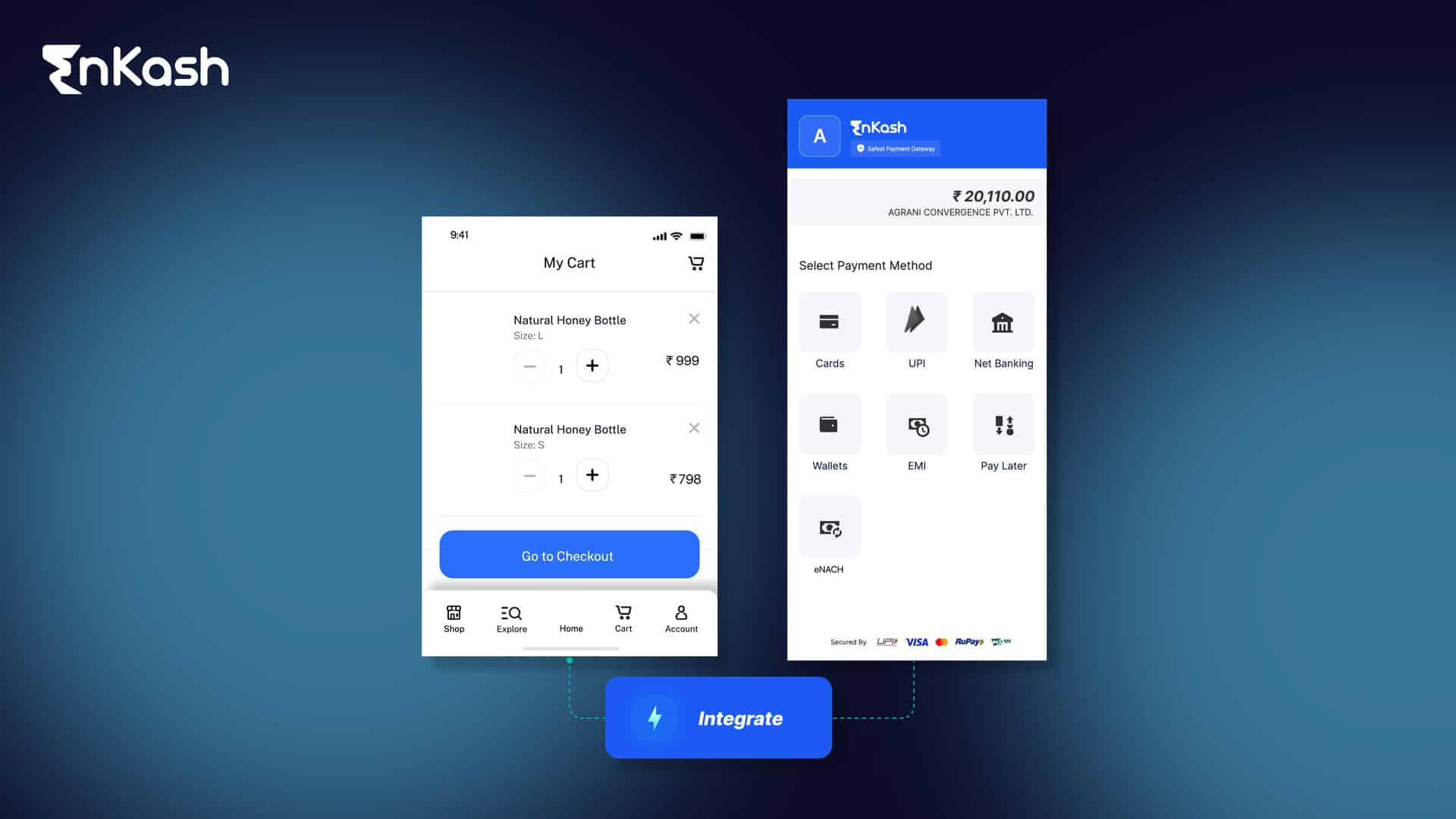Sometimes, the thrill of getting a job offer can be tamed by the shock you feel when you read your pay slip. Cost to Company (CTC) and “take home salary” are commonly misinterpreted terms that are essential to understanding how much money you make. CTC is the amount your employer paid for you, and take home salary means the money you will receive after deductions. This guide decodes these elements, letting you know what the cost to the company means and why is take take-home salary different from the CTC.
What is CTC? The Full Form and Cost to Company Meaning
The CTC is a measurement of how much money an organization pays per employee per year. The CTC covers cash and non-cash benefits such as base salary, allowances, bonuses, and company contributions. CTC usually exceeds the amount that an employee receives because it involves many items that don’t immediately factor into the take-home salary
CTC gives employers a platform to present the full range of benefits and perks available to employees and gives candidates a sense of what they are getting paid. But it can be confusing because it lumps together mandatory contributions (such as Provident Fund and Gratuity) that workers don’t get paid out monthly. This difference is necessary to prevent disappointment when comparing CTC to take-home salary.
Components of CTC
To better understand the cost to the company meaning or what is CTC? We need to understand some important components of CTC.
Basic Salary
The basic salary is an employee’s primary, fixed element. It accounts for roughly 40-50% of total CTC and determines most other salary components, such as allowances and bonuses. The basic salary is 100% taxable and subject to deductions like Provident Fund (PF) and TDS.
Example: If the gross CTC is ₹10 lakh per year, the basic pay can be between ₹4 lakh and ₹5 lakh per annum. This value is fixed and is required to calculate other benefits.
Allowances
Allowances are benefits added to the base salary to meet specific expenses or provide additional services. They are usually cash or non-cash components and vary depending on the company’s policies. Common allowances include:
- House Rent Allowance(HRA): A substantial monthly allowance towards housing. HRA is partly exempt from tax depending on whether an employee rents a room and other circumstances.
- Dearness Allowance (DA): A cost-of-living adjustment to address inflation, usually paid by the government. It is fully taxable.
- Travel Allowance: This covers expenses associated with getting to work. TA may be reimbursed or paid in fixed monthly installments.
- Medical Allowance: Provided for basic medical needs, this amount is normally taxed when not used under medical reimbursements.
Example: An employee with ₹10 lakh CTC will get allowances of ₹3 lakh for ₹1 lakh as HRA, ₹50,000 for travel, and ₹30,000 for medical allowance.
Statutory Contributions
Some components, such as Provident Fund (PF) and Gratuity, are statutory (that is, compulsory contributions made by the employer) and are part of CTC.
- Provident Fund (PF): Employers pay 12% of the basic salary to the employee’s PF to ensure the employee’s retirement. It is in the CTC but not available for take-home.
- Gratuity: Gratuity is another retirement allowance that employees are paid upon attaining five years’ work. Although it is calculated as part of the CTC, it is paid only upon resignation or retirement.
For instance, if an employee has a basic salary of ₹4 lakhs in a year, the employer’s PF would be ₹48,000 (12% of ₹4 lakh), and the gratuity would be around ₹20,000. Both of these values constitute part of the total CTC.
Prerequisites and Benefits
These tend to be non-cash benefits funded by the employer on behalf of the employee and thus provide indirect benefits to the CTC. Such benefits might include:
- Health Insurance: Most companies pay health insurance for workers (and sometimes their families). The premium amount is included in CTC but not in the cash salary.
- Company-Leased Accommodation: If the employer provides or pays for their housing, it is included in CTC.
- Meal Coupons: Food coupons redeemable at certain locations may also be included in the CTC.
Example: A worker is entitled to ₹50,000 in health insurance premiums and ₹20,000 in meal vouchers under their CTC. Even if these don’t pay out to the employee, they are all part of the CTC.
Read more: Corporate Payment Collection
How to Calculate CTC?
The CTC calculation helps in understanding the company’s cost meaning.
Here is the formula for calculating CTC:
CTC=Basic Salary+Allowances+Employer Contributions+Benefits
Consider a person with:
Basic Salary: ₹30,000 per month
Contributions: ₹10,000/month (HRA, travel)
Benefits: ₹2,000 a month (e.g., medical insurance)
Employer PF Contribution: ₹3,000 per month.
Then, the CTC will be 30,000 + 10,000 + 2,000 + 3,000 = ₹45,000 per month or ₹5,40,000 per year.
What is the Take-Home Salary?
Take-home salary means a worker’s monthly cash sum in their bank account. In contrast to CTC (paid as cash and non-cash benefit), take-home salary is the cash in hand after deductions. It is crucial to grasp this distinction as it helps employees plan out their month’s expenses and finances.
The take-home salary is determined by deducting all of the mandatory and voluntary deductions (income tax, Provident Fund contributions, Professional Tax) from the gross salary. The result is a more realistic monthly salary for an employee.
For example, if a worker earns ₹60,000 salary per month:
When tax, Provident Fund (PF), and Professional Tax (PT) are deducted, the take-home pay can reach ₹48,000.
Read more: Payroll Process
Key Deductions from Gross Salary
Gross salary, which is part of CTC, refers to the total amount of income received in a given month before deducting any deductions. But gross salary isn’t what workers are paid, because certain deductions are made to meet requirements of the law and company policies. These are deductions that impact the taxable salary and include:
Provident Fund (PF): PF is a pension plan in which the employer and employee share 12% of the basic salary. This is taken from the gross income and paid into the employee’s Provident Fund account, which they can access at retirement or certain qualifying events.
For instance, if an employee’s basic salary is ₹25,000, then ₹3,000 (12%) would be taken as PF monthly towards the employee’s retirement fund.
Income Tax (TDS): The employer must pay Tax at Source (TDS) depending on the employee’s rate of taxation. TDS is charged once a month after discounting for any tax-saving claims made by the employee. This ensures compliance with the annual income tax filing deadline.
Example: If a worker’s taxable income is ₹6 lakh a year and they are in the 10% bracket, then ₹5,000 is taken out of their monthly salary as income tax, subject to exemptions.
Professional Tax (PT): Professional tax is a state tax levied on workers working in excess of a certain limit. Rates vary state by state and typically range from ₹200 to ₹2,500 per year. Monthly PT deductions are deducted towards state government funds.
Example: PT in Maharashtra may be ₹200/month for certain rank categories, which would mean an overall deductibility of ₹2,400 annually.
For example, If the gross salary is ₹50,000 per month, with deductions of ₹2,500 as PF, ₹200 for PT, and ₹5,000 for TDS, the take-home salary will be Gross Salary – (PF + PT + TDS) = ₹50,000 – ₹7,700 = ₹42,300
Read more: What is payroll processing?
Why is Take-Home Salary Different from CTC?
Take-home pay is less than CTC because several things in CTC aren’t sent directly to the employee in cash. If you exclude statutory deductions, the take-home pay only contains cash items such as the basic salary and cash allowances. Non-monetary benefits and employer contributions boost CTC but do not affect the employee’s net salary.
Example: If an employee’s CTC is ₹8 lakh per annum, they may get about ₹5.5 lakh per annum due to the deductions and non-monetary allowances provided as part of the CTC.
Understanding Some Important Terms on Your Salary Slip
Your salary slip will include various terms and elements that affect your CTC, gross salary, and take-home pay differently. Some of these important terms are given below.
- Basic Compensation: It is the base salary you are paid, and it typically accounts for 40-50% of the CTC. The base salary is 100% taxed, directly impacting benefits and contributions.
- Dearness Allowance (DA): Typically applied to government employment, DA caps wages in response to inflation. DA is fully taxed and is dependent on inflation.
- House Rent Allowance (HRA): HRA is paid to cover housing expenses and is partly exempt from tax if the employee resides in a private house. HRA exemptions may not apply to home-owning employees.
- Conveyance Allowance: The conveyance allowance covers transportation between the workplace and home. In India, it is typically tax-free for a certain amount up to a certain threshold, like 1,600 per month.
- Provident Fund (PF): PF is a mandatory pension fund and is deducted by both the employer and the employee at a rate of 24% of the basic salary (12% by each). The money goes in an interest-bearing account.
- TDS (tax deducted at source): This is the amount paid by the employer per month from an employee’s annual income. TDS can vary monthly based on tax-saving announcements and amendments.
- Professional Tax (PT): PT is a minimal state-mandated tax that differs in each part of India. PT is unavailable in every state, so those who work where it is not will not be subject to this deduction.
Read more: HR compliance checklist for startups
CTC vs Take Home Salary vs Gross Salary
Below is a table that shows the different elements in CTC, gross, and take-home salary.
Components |
CTC |
Take-Home Salary |
Gross Salary |
Basic Salary |
Included |
Included |
Included |
Allowances |
Included |
Included |
Included |
Benefits |
Included |
Not Included |
Not Included |
Deductions |
Included as part of the cost |
Deducted from gross |
Included |
Tax(TDS) |
Not part of CTC. It applies only to gross salary. |
Deducted from gross |
Not Included |
CTC and Take-Home Salary Calculation
To better understand what take home salary means, let’s take a practical example and calculate the gross and take-home salary on behalf of CTC.
Let’s assume an employee has an annual CTC of ₹10 lakh.
The CTC breakdown will be as follows.
- Basic Salary: ₹4,00,000
- HRA: ₹1,50,000
- Special Allowance: ₹1,50,000
- Gratuity: ₹20,000
- Employer PF Contribution: ₹48,000
- Performance Bonus: ₹1,22,000
- Medical Insurance Premium (paid by employer): ₹10,000
Gross Salary = Basic + HRA + Special Allowance + Bonus
=₹4,00,000+₹1,50,000+₹1,50,000+₹1,22,000 = ₹8,22,000
Monthly gross salary = ₹8,22,000/12 = ₹68,500
Deduction from gross salary
Employee PF Contribution (12% of Basic):
=12%×₹4,00,000=₹48,000 annually, or ₹4,000 per month
TDS
Assuming the employee falls under a 10% tax slab after exemptions, TDS might be around ₹6,000 per month.
Professional Tax (PT)
Around ₹200 per month (₹2,400 annually).
Total monthly deduction
=₹4,000(PF)+₹200(PT)+₹6,000(TDS)
=₹10,200
Monthly take-home salary
=₹68,500−₹10,200
=₹58,300
Annual take-home salary
=₹58,300×12
=₹6,99,600
These calculations can be summed up as follows.
- The CTC is 10 lakh, inclusive of all benefits and allowances.
- Gross Income (excluding expenses): 8.22 Lakh.
- Monthly Take-Home Pay is 58,300 with PF, PT, and TDS deductions.
Read more: Essential HR policies for a Startup
Conclusion
Knowing the difference between CTC and take-home salary is important for financial planning and budgeting. CTC is the entire cost a business spends on an employee, including cash and non-cash elements such as allowances, mandatory benefits, and perks. However, take home salary means the actual amount a worker makes after taking all the deductions such as taxes, PF, and Professional Tax (PT). The difference between CTC and take home salary helps employees understand what to expect, budget for monthly costs, and be able to budget effectively. Payroll components can also be analyzed in detail to help workers find tax-saving opportunities and increase take-home salaries. Finally, understanding what is CTC and take-home pay allows workers to understand better how to keep their income under control and make financial decisions regarding career prospects. This also helps in striking better salary negotiation.
FAQs
What is the distinction between CTC and take home salary?
CTC is how much an employer pays for an employee annually — salary, benefits, and statutory contributions. Take home salary means the amount an employee takes home before paying for Provident Fund (PF) and taxes.
What is basic pay in my CTC?
Base pay is a predetermined portion of CTC and represents 40-50% of CTC. It is 100% taxable and provides the basis for PF, HRA and other allowances.
Are bonuses included in CTC?
Yes, performance-based and joining bonuses are typically included in CTC. But because they’re sometimes paid periodically or based on certain factors, they don’t impact your monthly take-home pay.
What are the direct and indirect advantages of CTC?
Direct benefits are cash elements such as basic salary and allowances, which are a part of the gross salary. Incremental benefits, such as PF and insurance, are company-funded expenditures included in CTC that are not taken home.
What is pt in the salary slip?
PT, or professional tax, is the state tax charged to salaried workers. This deduction is subject to state rules and is mandatory for those earning more than a certain income level.
Can I increase my take-home salary?
Yes, through an FBP that enables you to modify aspects such as HRA or reimbursements to take advantage of tax savings and increase your take-home pay.
How does the Provident Fund (PF) impact my take-home salary?
PF reduces take-home pay by adding 12% of the basic salary from both employer and employee per month. Employee share is subtracted from gross salary.
Why is knowing CTC essential before taking a job?
Knowing the cost to the company meaning helps you estimate a salary on the spot because it gives you cash and non-cash benefits, letting you know what you can earn every month and compare offers.
Is the gratuity part of take-home pay?
No, gratuity is part of CTC, but it’s not a monthly instalment. It only comes after at least five years of working for an employer.













